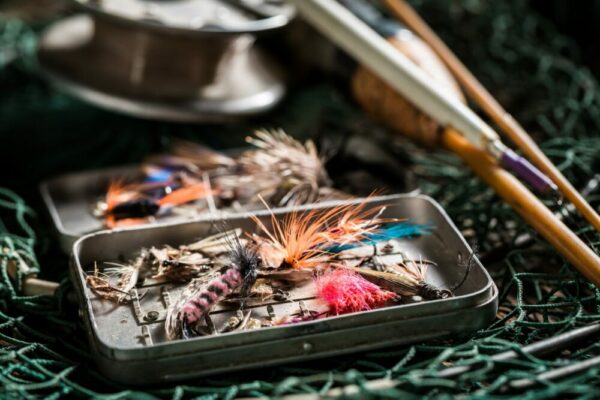
Scottish salmon ghillie ‘Redding Lines’ [1800s] in the town of Fittie Fowk.
Introducing the Turle

Skip Clement, New Zealand.
By Skip Clement
Major William Greer Turle, an English soldier and fisherman from the 19th century, never claimed ownership of this knot that bears his name. However, the major fished with Frederic M. Halford late in the same century in Hampshire chalk streams. They were both the earliest users of eyed hooks while fly fishing. The knot was first documented in 1886 by H. Cholmondeley-Pennell in Modern Improvements in Fishing Tackle and Fish Hooks. He was a highly experienced angler who fished in both seas and rivers, including the Thames and Norfolk Broads and was known to have caught bream, chub, perch, mackerel, flatfish, and others.
When to use the Turle
The Turle Knot is best used to join a fly with a turned eye to a fishing line. There are variations to knot tying as every fisherman has their techniques; however, one referred to as the “improved” turle knot recommends tucking the tag through the large loop before you tighten the knot onto the hook eye.
Like the Clinch Knot, several fly fishing knots firmly marry the fly to the hook eye. Unfortunately, this connection can often lead to the fly being incorrectly seated or positioned ‘off-center.’ Thus, making the fly swim unnaturally and unlikely to get an eat. A better tie would be a Nonslip Loop Knot, Duncan Loop Knot, or Turle Knot, each allowing the fly to swim naturally. That said, it should be noted that a Duncan Loop is a slip knot and, under stress, will seat itself firmly attached to the eye of the hook.
Another remedy is a tube fly, which relies on the fly to govern a fly’s ‘wiggle’ swim, unlike a hook-tied fly
The favorite of anglers I fished with in North Island, New Zealand, liked the Turle Knot.
Limiting the Turle Knot to flies no bigger than salmon flies is about as helpful as saying use a tire on your vehicle. The thought might be that big ‘feathered’ flies could be crushed when seating the fly. However, since the Turle pre-seating knot is a slip knot, any size loop can be made to protect from ‘ruffling’ feathers of a tied pattern.
Oddly, the Nonslip and Turle knots test breaking around 90% of the line strength they’re tied on.
Becoming proficient at tying the Turle or Nonslip takes little time to master and develop finger muscle memory. Both are simple knots.
The one con of the Turle Knot is that tied on a straight eye hook makes the fly swim poorly – forcing the fly into the water at an awkward angle. An up-eye or down-eye hook eliminates the concern about using the Turle.
Too, a tube-tied fly, no matter its size, relies on the ‘feathers’ of the fly for a fly’s movement in the water.
There are a few different tying techniques for the Turle, but Simon Gawesworth’s method from RIO Products has a staff nod as the easiest.

Illustration by Thom Glace – rainbow trout, brown trout, and brook trout. Used with permission.







